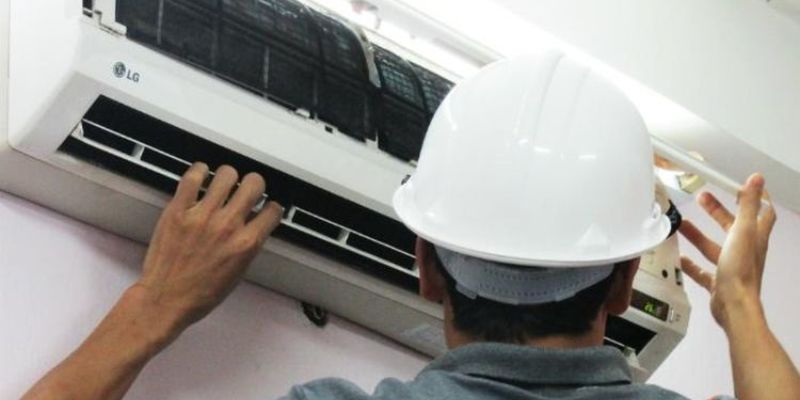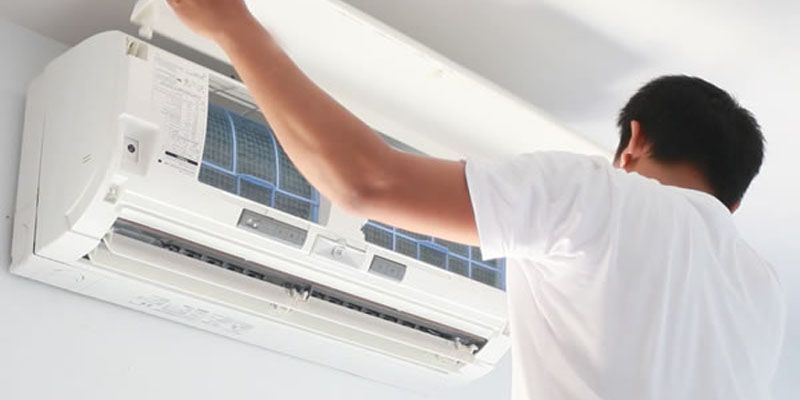The refrigeration industry plays a critical role in our daily lives, from preserving food to maintaining comfortable indoor climates. However, when equipment malfunctions, it can disrupt operations and lead to considerable losses. Understanding the standard repair process for refrigeration systems, particularly in District 7, is essential for field technicians and facility managers. This article aims to outline the comprehensive steps involved in the repair process while providing insights that go beyond the basic facts.

See more: điện lạnh quận 7
Understanding Refrigeration Systems
Before diving into the standard repair process, it is crucial to have a foundational understanding of refrigeration systems and their components.
Refrigeration systems operate on the principles of thermodynamics, utilizing refrigerants to transfer heat from a designated area, thereby cooling that space. These systems comprise several key components, including compressors, condensers, evaporators, and expansion valves. Each part plays an integral role in the system’s overall function.
Understanding these components allows technicians to diagnose issues effectively. When a refrigeration unit fails, identifying the specific part that requires attention is the first step toward timely repairs. Misdiagnosing or skipping over this crucial phase can exacerbate the problem, leading to extended downtimes and increased costs.
Key Components of Refrigeration Systems
- Compressors The compressor is often referred to as the heart of a refrigeration system. It compresses the refrigerant gas and circulates it through the system. When malfunctioning, it can lead to inadequate cooling or complete system failure. Technicians need to be familiar with various types of compressors, such as reciprocating, scroll, and rotary, to address issues effectively.
- Condensers Condensers are responsible for rejecting heat from the refrigerant, transforming it from a gas back into a liquid. A clogged or damaged condenser can significantly hinder the efficiency of the refrigeration system. Regular maintenance and cleaning are paramount to ensure optimal function.
- Evaporators The evaporator absorbs heat from the environment, causing the refrigerant inside to vaporize. If the evaporator coil becomes frozen or dirty, it can impede the refrigeration cycle. Troubleshooting these issues involves examining airflow and ensuring the refrigerant levels are adequate.
Importance of Maintenance Checks
Regular maintenance checks play a vital role in prolonging the life of refrigeration systems. Neglecting routine inspections can lead to minor issues escalating into major problems, resulting in costly repairs and downtime. Implementing a scheduled maintenance plan not only enhances productivity but also contributes to energy efficiency.
Conducting frequent checks allows technicians to identify potential hazards early, mitigating risks before they become significant operational hurdles. Moreover, an efficient refrigeration system can yield substantial savings in energy costs, underscoring the importance of proactive maintenance.
The Repair Process: Step by Step

See more: điện lạnh TPHCM
Understanding the standard repair process for refrigeration systems in District 7 requires breaking down the procedure into manageable steps.
Each repair may vary based on the system’s complexity and nature of the fault, but adhering to a structured process is essential for effective troubleshooting. This section will outline the necessary phases in the repair workflow, enabling technicians to follow best practices consistently.
Initial Assessment and Diagnosis
The first step in any repair process is conducting an initial assessment. This phase sets the tone for the entire repair, guiding technicians toward an accurate diagnosis.
A thorough evaluation starts with gathering information from the user regarding the symptoms of the malfunction. Questions about recent changes in performance, unusual noises, or visible leaks can provide valuable clues.
In addition to verbal communication, technicians should inspect the unit visually. Look for signs of wear, loose connections, or leaking refrigerant. Utilizing diagnostic tools such as pressure gauges and thermometers can further pinpoint the issue.
Once sufficient data is gathered, technicians can formulate a hypothesis regarding the likely cause of the problem. This educated guess serves as a foundation for the next steps in the repair process.
Planning and Preparation
Once the diagnosis is established, technicians must plan the repair process accordingly. This preparation phase involves determining the necessary tools and replacement parts needed for the job.
Having a well-stocked toolbox is crucial; technicians should carry essential tools like wrenches, refrigerant recovery equipment, and multimeters. In addition, it’s advisable to keep commonly used replacement parts on hand to minimize delays during the repair.
Collaboration may also be necessary at this point. Depending on the complexity of the repair, some technicians might consult colleagues or manufacturers for additional insights or technical support.
Ensuring safety is paramount during this phase. Technicians should familiarize themselves with safety protocols and use appropriate personal protective equipment (PPE) to mitigate risks associated with handling refrigerants and electrical components.
Execution of Repairs
With careful planning and preparation complete, technicians can now proceed to execute the repairs. This step requires meticulous attention to detail and adherence to safety measures.
When replacing faulty components, technicians should follow the manufacturer’s instructions closely. Documenting each step of the process can be beneficial, providing a reference for future maintenance or inspections.
After completing the repairs, conducting functional tests is essential. These tests help verify that the system operates correctly and efficiently. Any adjustments or fine-tuning can be made during this time to ensure optimal performance.
Finally, once the repairs are confirmed to be successful, technicians should clean the work area and ensure that all tools are accounted for. Leaving a tidy workspace is not only courteous but also promotes safety.
Post-Repair Evaluation
After the repair is completed, technicians should conduct a post-repair evaluation. This step involves reviewing the entire process, reflecting on what went well and areas for improvement.
Gathering feedback from users can offer insights into their satisfaction with the repair and overall system performance. Should any lingering issues arise, technicians must remain available for follow-up assessments.
Documenting the repair process is equally important. Keeping records of repairs, replacements, and evaluations can assist in future diagnostics and establish a history of the refrigeration system. This documentation is invaluable for ongoing maintenance and can prevent similar issues from reoccurring.
Safety Considerations in Refrigeration Repairs
Safety is a paramount concern in the refrigeration repair process. With the potential for hazardous materials and high-pressure systems, technicians must prioritize safe practices throughout each stage of the repair.
Safety regulations within District 7 dictate specific protocols that must be followed to protect both technicians and the environment. Compliance ensures that everyone involved remains safe and mitigates liability risks for employers.
Handling Refrigerants Safely
Refrigerants can pose significant health and environmental risks if mishandled. Technicians must be aware of the type of refrigerant used in their systems and adhere to guidelines for safe handling and disposal.
Proper refrigeration recovery techniques involve using specialized recovery units designed to capture refrigerants during repairs. This practice minimizes emissions and protects the ozone layer.
Additionally, technicians should undergo training on recognizing symptoms of refrigerant exposure, such as headaches or dizziness, and know the proper steps to take should such exposure occur.
Working with Electrical Components
Many refrigeration systems contain high-voltage components, which carry their own set of risks. During repairs involving electrical systems, technicians should always disconnect power sources and use insulated tools.
Awareness of lockout/tagout procedures is critical. This safety measure prevents accidental energization of equipment during maintenance, providing peace of mind for technicians working on potentially dangerous systems.
Training in electrical safety helps technicians recognize the hazards associated with wiring, circuits, and components. They should be well-equipped to respond swiftly to any electrical emergencies that may arise during repairs.
Personal Protective Equipment (PPE)
Personal protective equipment is an essential aspect of technician safety. Appropriate PPE includes gloves, goggles, and respirators, ensuring protection against mechanical, chemical, and thermal hazards.
Technicians should assess the risks associated with each repair task and choose suitable PPE accordingly. Regular training can reinforce the importance of wearing proper gear and instill a culture of safety among team members.
Enhancing safety awareness not only protects individual technicians but also fosters a safer work environment overall. Encouraging open discussions about safety can lead to improved practices and a greater commitment to worker well-being.
FAQs
What should I do if my refrigeration system isn’t cooling properly?
If your refrigeration system isn’t cooling adequately, check the thermostat settings and ensure that the air filters are clean. If you’ve ruled out minor issues, consider contacting a professional technician to diagnose the problem.
How often should I schedule maintenance for my refrigeration system?
Routine maintenance is recommended at least twice per year, ideally before peak usage seasons. This proactive approach helps prevent unexpected breakdowns and maintains optimal efficiency.
Can I perform repairs on my refrigeration system myself?
While minor tasks like changing air filters can be done by individuals, more complex repairs should be left to qualified technicians. Attempting repairs without proper knowledge and tools can lead to further damage or safety hazards.
What are signs that my refrigeration system needs immediate repair?
Signs that indicate your refrigeration system needs urgent attention include unusual noises, fluctuating temperatures, visible refrigerant leaks, or an increase in energy bills. If you notice any of these symptoms, contact a technician promptly.
Is it necessary to use OEM parts for refrigeration repairs?
Using original equipment manufacturer (OEM) parts is highly recommended for ensuring compatibility and reliability. While aftermarket parts may be cheaper, they can compromise system performance and longevity.
Conclusion
In conclusion, the standard repair process for refrigeration systems in District 7 encompasses a systematic approach that prioritizes thorough diagnosis, meticulous execution, and stringent safety protocols. As complexities in refrigeration technology evolve, so too must the strategies employed by technicians. Proactive maintenance and rigorous safety considerations not only enhance the lifespan of refrigeration systems but also protect the individuals who work on them. By adhering to best practices and cultivating a culture of continuous learning, professionals in the refrigeration industry can contribute to a more sustainable and efficient future. Ultimately, investing in reliable repair processes leads to enhanced performance and cost-effectiveness, benefiting everyone involved.



